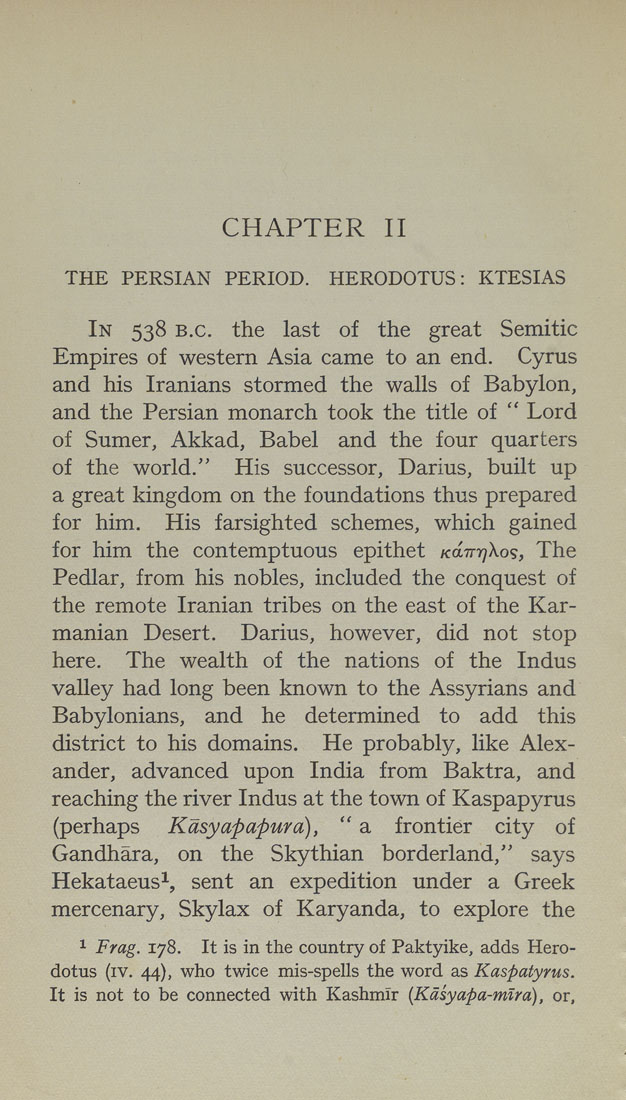CHAPTER II
THE PERSIAN PERIOD. HERODOTUS: KTESIAS
In 538 B.C. the last of the great Semitic
Empires of western Asia came to an end. Cyrus
and his Iranians stormed the walls of Babylon,
and the Persian monarch took the title of " Lord
of Sumer, Akkad, Babel and the four quarters
of the world." His successor, Darius, built up
a great kingdom on the foundations thus prepared
for him. His farsighted schemes, which gained
for him the contemptuous epithet KdmqXos, The
Pedlar, from his nobles, included the conquest of
the remote Iranian tribes on the east of the Kar¬
manian Desert. Darius, however, did not stop
here. The wealth of the nations of the Indus
valley had long been known to the Assyrians and
Babylonians, and he determined to add this
district to his domains. He probably, like Alex¬
ander, advanced upon India from Baktra, and
reaching the river Indus at the town of Kaspapyrus
(perhaps Kdsyapapura), " a frontier city of
Gandhara, on the Skythian borderland," says
Hekataeus^, sent an expedition under a Greek
mercenary, Skylax of Karyanda, to explore the
1 Frag. 178. It is in the country of Paktyike, adds Hero¬
dotus (iv. 44), who twice mis-spells the word as Kaspatyrus.
It is not to be connected with Kashmir (Kdiyapa-mtra), or.
|








